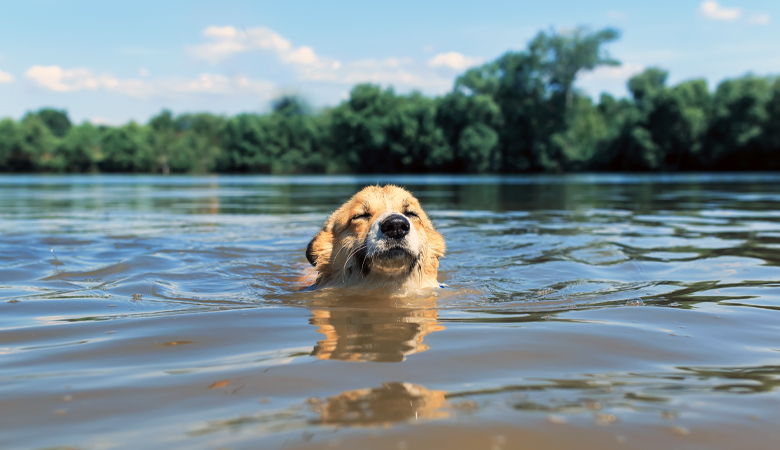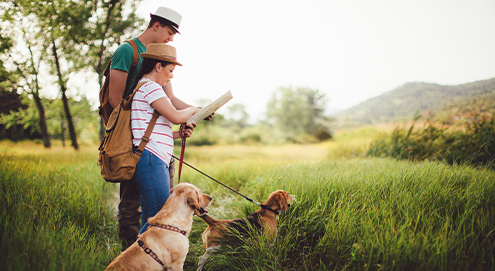2. Monitor water quality and signs of contamination
Warm, stagnant water can become a breeding ground for bacteria and algae that may be harmful to dogs. Blue-green algae, botulism, and leptospirosis are the main risks for swimming dogs.
If you notice a foul smell, dead fish, or unusual scum on the water, don’t let your dog swim or drink there. Always check for up-to-date alerts or signage at swimming locations.
Blue-green algae
Blue-green algae are bacteria that form a toxic, oily film on the water’s surface. Signs of poisoning include vomiting, diarrhoea, muscle tremors, and in severe cases, seizures. There is no antidote. Only rapid, supportive treatment by a vet may help.
Botulism
Botulism is caused by a neurotoxin produced by bacteria, often found in water containing dead fish or birds. Symptoms such as paralysis, vomiting, and diarrhoea typically appear after a few days. There is also no antidote for this condition.
Leptospirosis
This bacterial infection is spread through water contaminated with rat urine. Your dog can be vaccinated against leptospirosis, and this should be repeated annually. Vaccinated dogs can still get sick, but have a much higher chance of recovery. Make sure your dog is protected against parasites before going on holiday.
3. Introduce your dog to water gradually
Not every dog is a natural swimmer. For puppies, older dogs, or those with little experience, it’s important to introduce swimming slowly and safely. Go into the water together, stay close, and never force your dog. Positive experiences build confidence and enjoyment.
4. Use a life jacket for added safety
If you’re boating or swimming in deeper water, a life jacket is a smart choice. Even confident swimmers can become tired or panic if they fall in. A well-fitting life jacket adds buoyancy and peace of mind.
5. Always provide clean drinking water
Bring plenty of fresh water for your dog. This prevents them from drinking salty or contaminated water. Handy options like the Duvo+ Buddies on the Go Drinking Bottle or the KONG H2O Stainless Steel Water Bottle make it easy to keep your dog hydrated on the go.
Especially on hot days, extra cooling is a must. Explore clever products for cooling your pet at home and on the go.
6. Keep a close eye on your dog
Don’t let your dog swim for too long, and ensure they can easily exit the water. Swimming is physically demanding and some dogs tire faster than expected. Look for signs of fatigue or disorientation. Expecting hot weather? Read our practical tips for warm days with your dog.
7. Prepare well for your holiday
Going on holiday with your dog and planning to swim together? Use our checklist for taking your dog or cat on holiday. If you’re going camping, a few extra preparations are needed. Discover how to enjoy a safe and relaxed camping holiday with your dog.







